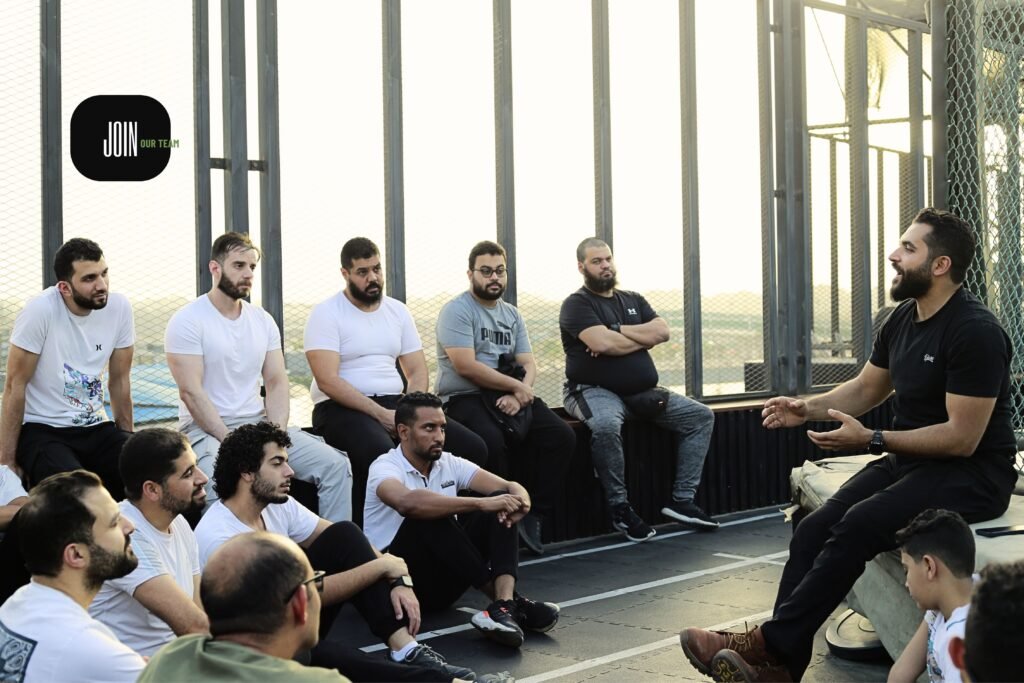
The story began in 2004 when I embarked on exploring the world of self-defense arts.
I was searching for a unique combat system that suited my needs, one that relied on skill rather than brute force and intensive training, and was effective and easy for self-defense and survival in dangerous situations. After practicing karate and kung fu, I found Aikido to be the system that intrigued me with its innovative approach to combat.
Aikido’s reliance on kinetic engineering to control opponents, rather than sheer muscular strength, appealed to me. It blends precise movements and repetition, not relying solely on physical power. Its primary goal is to control the opponent without causing serious injury, focusing on the fundamental objective of achieving control without bloodshed.
This system is characterized by not adhering to specific rules in combat; it’s not designed for competitions or tournaments but aims to reprogram the body and mind to achieve greater harmony and fluidity in movements, contributing to inner tranquility.
After practicing Aikido for over five years, I realized it was an excellent choice for achieving the fundamental goals I was searching for. However, I also recognized its lack of essential elements for dealing with more challenging situations. Aikido, in its current form, prepares you to handle self-defense situations with non-combatant individuals but falls short in dealing with experienced adversaries in combat situations in general.
This shortfall wasn’t a flaw in Aikido but a result of the training system adopted without development. Surprisingly, after research, it became evident that Aikido’s founder, Morihei Ueshiba, drew inspiration from several combat techniques stemming from Japanese jujitsu and other arts. Ueshiba focused on improving the efficiency and direction of movements with greater effectiveness and harmony, without focusing on combat basics like strikes and kicks, as he and his students already possessed them. His focus was on developing defenses based on his unique circular movements, redirecting and utilizing the opponent’s force against them.
After years of training and experimentation, I began integrating Aikido with Wing Chun, which relies on hand strikes, kicks, and close quarters combat, as well as an advanced system for using knives and swords. This integration posed a challenge due to differing strategies, unlike arts like kickboxing and Muay Thai, which rely on longer distances, while Aikido involves approaching the opponent, similar to Wing Chun. This complex integration requires a delicate balance between different strategies.
Despite the need to avoid falling or grappling on the ground in combat, maintaining one’s composure and stability is crucial. However, in case of a fall, qualifications to aid survival and control of the situation are necessary, hence the need for ground fighting. After mixed experimentation with various martial arts, Brazilian Jiu-Jitsu proved ideal for ground combat challenges. I developed my skills in this art to enhance the capabilities of the modified AIKICHUN system in dealing with ground combat situations.
But the greatest challenge was integrating Wing Chun, Brazilian Jiu-Jitsu, and other systems through the AIKICHUN tactical combat system. There was significant variation in strategy and similarity in the system, as each system had a different goal but a common approach of penetrating the opponent’s strength and reaching point zero, close to the opponent’s body, to achieve control. Hence, a training curriculum was built based on combat strategies and various scenarios that must be trained to become natural when faced with them in reality.
Fortunately, during my travels to China to learn Wing Chun, it was challenging to find a suitable school. I spent six years there, training at the “EVER GREEN” school under the supervision of Master Ronald Kho, who belongs to Master Samuel Kwok’s lineage, a disciple of Ip Chun, the son of the founder, Ip Man.
While in China, during my work trips, I collaborated with the crime prevention unit in the Shenzhen area to implement the AIKICHUN system as an alternative to the Israeli Krav Maga system. This system remained accredited for four years, and I successfully trained their personnel. I hope this system spreads in Egypt and the Arab world and continues to evolve to achieve its goals.
AIKICHUN is not a new combat system or art but rather a fusion of several martial arts focusing on self-defense. It aims to provide an effective fighting style that benefits from a variety of techniques and strategies. It enables fighters to survive and control close combat, ground fighting, and deal with dangerous situations.
Unlike MMA, which combines various martial arts for competition victories, AIKICHUN stands out for its focus on self-defense and real combat. It offers a different approach to traditional martial arts, emphasizing effectiveness and tactics while encompassing a variety of combat models and situations, suitable for special forces and combat while carrying equipment to achieve their objectives. Remember, one of the main goals is to achieve maximum results with minimal effort.